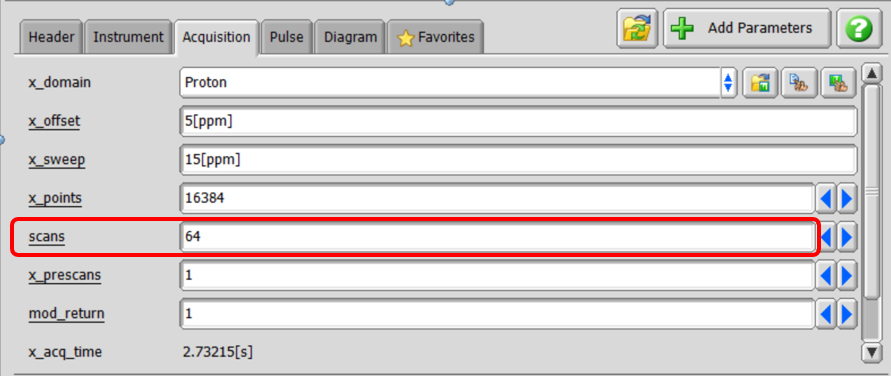How to automatically reflect the measurement parameters in the saved file name.
NMDT_0072
Have you ever been confused by forgetting to change the file name when you changed measurement conditions?
In Delta, you can automatically reflect the parameters used in the measurements to the filename. The automatic input can prevent file name entry errors and facilitate data sorting.
The measurement filename is specified by "storage_filename" on the "Header" tab of the experiment file. By default, the "storage_filename" is "$(SAMPLE)_$(EXP. filename)". At this time, the sample name and the text entered in "filename" are automatically reflected in the saved file name as "sample name_filename". When the sample name is "sampleA" and the filename is "proton", the file is saved as "sampleA_proton".

Editing the saved filename
By editing the "storage_filename", sample parameters and experimental parameters can be automatically reflected in the saved filename. There are three types of character strings that can be reflected: (1) Sample attributes, (2) Experiment parameters, and (3)Date.
(1) Sample attributes are associated with samples, such as set temperatures (temp_set) and MAS frequencies (MAS_spin_set).
To reflect them automatically, insert "SAMPLE." in front of the parameter you want to enter, such as $(SAMPLE.temp_set) or $(SAMPLE.MAS_spin_set).
(2) Experiment parameters are ones in experiment files, such as the observation center (x_offset) and the number of scans (scans).
To reflect them automatically, insert "EXP." in front of the parameter you want to enter, for example $(EXP.x_offset) or $(EXP. scans).
(3) Measurement date can be reflected by inserting $(YEAR)$(MONTH_NUM)$(DAY_NUM). (See NMDT_0003 for details )
As an example, we will show how to automatically reflect the set temperature and the number of scans into the saved file name in addition to the default sample name and file name.
1. Automatic reflection of sample attributes

Set the temperature by "temp_set" in the sample attribute as shown in the figure above.
Therefore, if you add "_$(SAMPLE. temp_set)" to the "storage_filename" column, the setting value of "temp_set" will be automatically reflected into the storage_filename as shown in the figure below.

2. Automatic reflection of Experiment parameters
The number of scans is set by "scans" of the Experiment file.

If you add "_$(EXP. scans)" to the "storage_filename" column, the setting value of "scans" will be automatically reflected as shown below.

Since there is no unit for the number of scans, only numbers are entered, making it difficult to understand as a filename.
In such a case, it is recommended to directly enter the character string "scans" as shown below.

- Please see the PDF file for the additional information.
Another window opens when you click. 
PDF 881KB
SEARCH APPLICATIONS
Related Products
Are you a medical professional or personnel engaged in medical care?
No
Please be reminded that these pages are not intended to provide the general public with information about the products.
